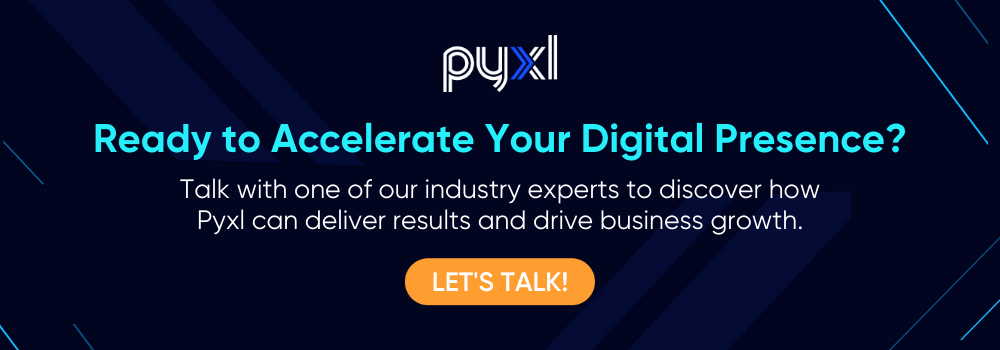The importance of buyer personas in higher education marketing
In higher education, creating buyer personas is paramount to being able to attract your ideal students and retain current students at your college or university. So, what exactly is a “buyer persona”?
What is a Buyer Persona?
Buyer personas are semi-fictional representations of your ideal customers, or in this case, your ideal students! These personas are created based on the research you do on your current students, as well as potential students you’d like to attract to your institution. This research should include insight into demographics, goals, needs, pain points, and behavior.
It should go without saying, that a strategy is critical when beginning any inbound marketing campaign. One of the key parts of your inbound marketing strategy should be your buyer personas. Why? Because everything you do – from content creation to choosing platforms to promote your content on – should be based on them. How can you ensure your content will resonate with your potential students and that you’re targeting them in the right places at the right time if you don’t know exactly who they are and what they prefer?
Your buyer personas will probably never be fully finished, so you’ll want to try to consistently tweak them according to changes in your target audience’s needs. Depending on your institution’s goals – whether you want to attract new students or better retain current students, you will also have multiple buyer personas that represent both your ideal and current students. Within each of those groups, you’ll likely have a few different personas, as well.
For example, within prospective students, you might have a persona that represents private high schoolers, public high schoolers, and those who are homeschooled.
In the following case study, we’ll introduce you to Prospective Student Christina and break down the steps of forming her persona, so you can see just how it is done.
Meet Our Persona: Prospective Student Christina
Prospective Student Christina is a junior at a small private high school in Knoxville, Tennessee. She is very involved at her high school and serves as class president and member of the Mathletes team. Christina is also very studious and spends her evenings and weekends studying.
When she’s not at school or studying, Christina enjoys spending time with her family and friends. She loves her hometown and wants to stay close to her family when she goes off to college. Her parents are willing to help her pay for college but want her to do most of the research and make an informed decision. She plans to apply to three or four different colleges in the area, but her top choices are the state flagship university and a smaller, liberal arts college.
Most of her schooling up to this point has been at a small, private school, so she is unsure whether she wants to stay in that type of environment or attend a larger institution. Christina is also struggling to understand what her options are for financial aid at each institution.
Why all the background information?
At first glance, it might seem like there is a lot of unnecessary information included. An admissions professional might wonder, “Why do I need to know whether or not the student wants to stay in a small town?”, “Why should we be concerned about how involved he or she is at school or his or her choice of after-school activities?”, “Why is it important to know what year in school he or she is?” and “Why should we worry about his or her confusion about financial aid (we always take care of that after we receive an application)?”
Well, if you’re a smaller, liberal arts school, you probably don’t want to target students who want to leave small hometowns and attend a large university. You also don’t want to spend a ton of emails about your honors program to a student with an average GPA who likes to spend his or her weekends on the soccer field instead of hitting the books. Additionally, some students might not bother applying to a college or university if they think it is out of their price range, so it’s important that potential students understand their financial aid options. It’s critical to have as much background and demographic information about your buyer personas – potential students – as possible.
What do I need to know to create personas?
First, find the answers to the following background questions:
- Where does your ideal student live? How old are they?
- What are their goals? What kind of institution are they looking for?
- What challenges are they facing? Paying for college? Navigating the admissions process?
- What are their possible objections to your school? Too big? Not the right program?
Once you have the answers to these questions, use this information to create content to attract potential students by answering their questions – inform them that your institution fits their needs.
For example, we know from our example persona, Prospective Student Christina, that she is struggling to understand her financial aid options. Since Christina is a representation of your ideal potential student group, you need to make sure that you are creating content that answers their questions about financial aid. This content might come in the form of blog posts about the different aspects of financial aid, a checklist that students can download to make sure they have a complete financial aid application, or an e-book on how to write the perfect scholarship essay.
Where do I find all this information?
You can start figuring out who your ideal students are by looking at your current students. What types of students applied to your school? What are their interests? Where is their hometown? Look for trends across your current student body and those who have submitted applications. Additionally, conduct keyword research to figure out what potential students might be searching for online – for example, “help with financial aid” or “how to apply to college.”
How do I make variations of a potential student persona?
Prospective Student Christina might represent the average student at your school, but you will probably have more than one ideal student group. You’ll of course have a more general persona, like Prospective Student Christina, but you also might have several sub-personas that represent other trends in your student body.
For example, you might also have Studious Sammi who represents the ideal candidate for your honors program, and Athlete Aaron who represents your ideal student-athlete. In these cases, you would go about creating these buyer personas – Athlete Aaron and Studious Sammi – in the same way, you created Prospective Student Christina.
Check out this helpful tool for creating visual student personas.
Interested in learning more? Pyxl is an award-winning digital agency that can help you explore more ideas about creating buyer personas and attracting your ideal student base. Contact us today!
Updated: Nov 15, 2024
 Taylor Farace
Taylor Farace
 Kati Terzinski
Kati Terzinski Erin Murray
Erin Murray